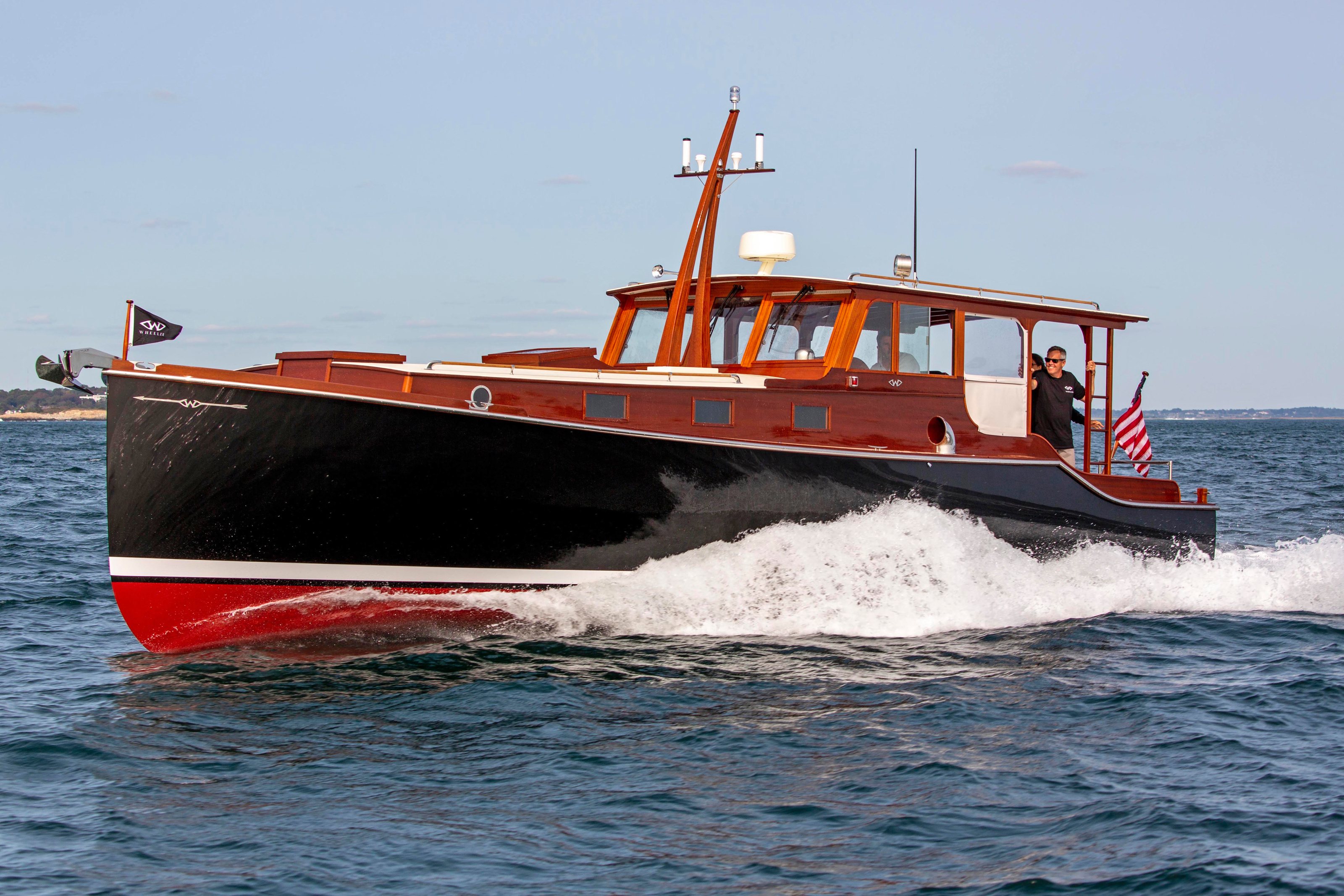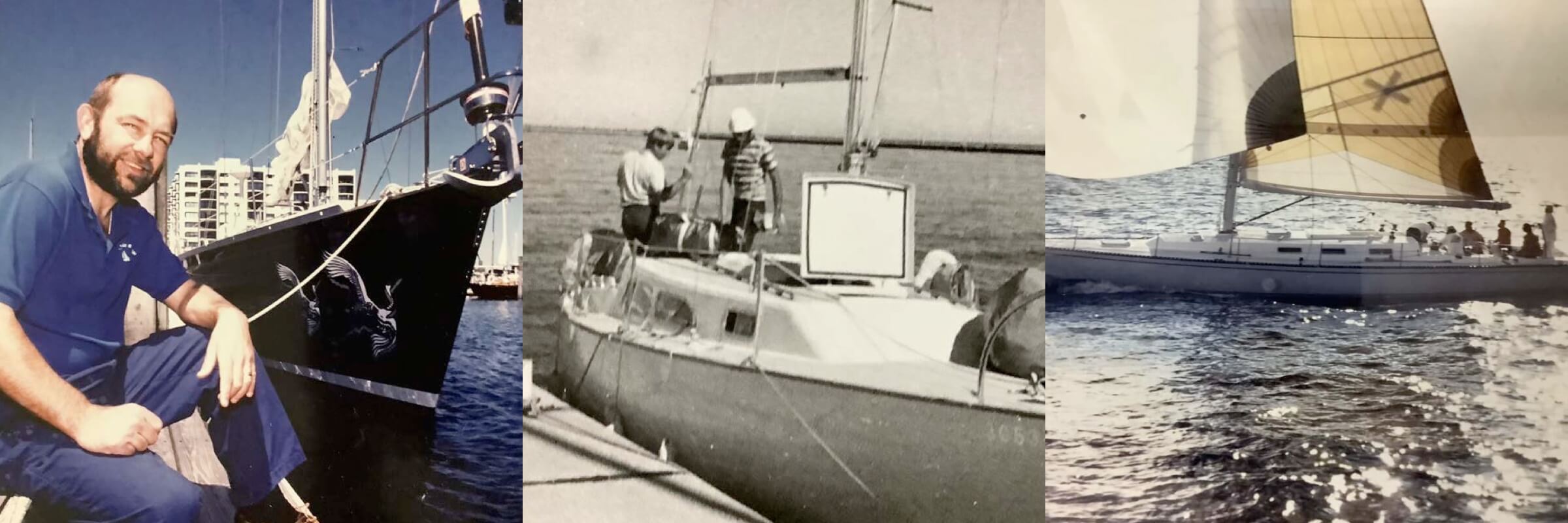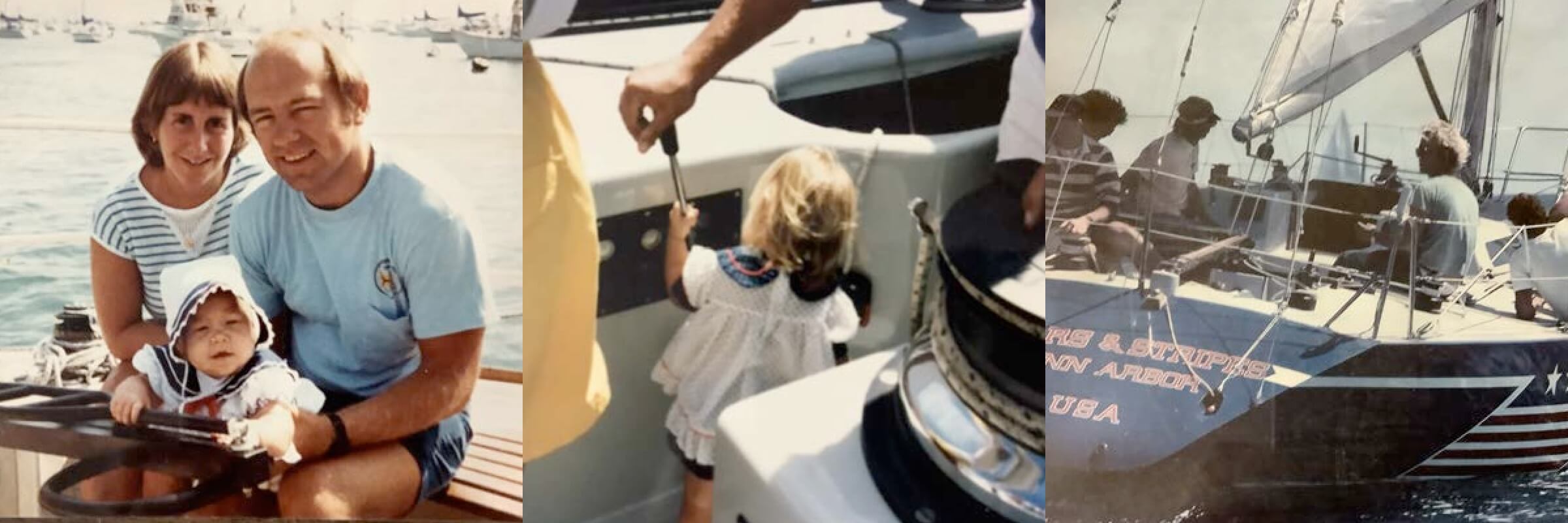
How to Design a Modern Version of a Classic Hull
I got involved in the Wheeler project in 2012 through Jim Moores, one of the country’s top Trumpy restorers. I had previously done projects with him on El Presidente/Innisfail, a 92-foot, 1920’s Wood Sub-Chapter T Trumpy Motor Yacht, and Summerwind, a 100-foot, 1920’s Alden Schooner. The Civil/Structural engineer team also did Jim’s boatyards stormwater and coastal permitting, and foundations and wind loading for his boatyard buildings.
I’ve had several new computers since I started on the Wheeler Pilar Project, but I did find a few emails from October of 2012 where I was emailing Wes Wheeler the hydrostatics that I derived from the 1934 Wheeler 34-foot Playmate called “Elhanor”, the fake Pilar that was to be used for the Hemingway Movie with Andy Garcia. I remember going up to Moore’s shop on the Friday of Memorial Day Weekend to measure Eleanor out of the water in order to extrapolate into a Wheeler 38 Lines Plan. So that would have been May 2012, and I am sure that means that I was talking to Wes in March and April of 2012. Wes had engaged me to develop a set of replica hull lines. The May 2012 measurements were done the old-fashioned way, with surveyor’s level (transit), plumb bobs, tape measures and a lot of sweat. (It must have been 100 degrees F in the shop).
And not totally old fashioned, I did a combination of Autocad Hull Lines fairing and Rhino 3D hull modeling. So it was first a 2D cad drawing of the Wheeler 34’s hull lines, and making a 3D rhino model from that to verify hydrostatic properties.
Wes Wheeler did have some photocopied PDFs of old brochures from his grandfather’s company, I want to say on both the 34 and 38, but it might have only been the 38. Once Eleanor went back in the water, Jim Moores was able to get me freeboard readings, so that I could determine its displacement, and also to confirm hull characteristics and back-figure boat speed coefficients for predicting speeds on the 38. (The Professional Boatbuilder Magazine #233 article on the Elheanor/Pilar came out in August 2013, while I was still working on the calcs/drawings).

Creating the Pilar/Legend Hull Lines
Wes’s goal was to get as close as possible to Pilar’s original hull lines. Wes had various dimensions and pictures that I believe that he and Heidi (or is it Hillary) Hemingway took from the actual Pilar in Cuba. And there was a book about Ernest Hemingway and the boat that had snippets of relative boat data that I was able to extract and use in my design efforts. It’s amazing what an experienced yacht designer can do by bringing a JPEG of a boat into AutoCAD and scaling it based on some known dimension or dimensions. And deadrise angles can be verified, bow curve radius estimated, etc. In the 1970s/1980s, it took about 100 to 120 hours to hand draw and fair a set of hull lines, and another couple of days to pull the table of offsets. Rhino 3D with the Orca Plug in automates creating an offset table and calculating hydrostatic properties, but I have not found Rhino to be to my level of professional accuracy for faired hull lines. In the old days, designers gave the builder a blueprint drawing along with the table of offsets. The builder was expected to take the table of offsets, redraw full size on the loft floor (lofting) and correct any small scale drawing inaccuracies. (Or to ask the designer for verification).
Since the newer method is to create full-size frame template drawings or CAD cut files, the designer needs to be absolutely sure that lines are fair. I go nerdy and verify that since deadrise angles follow a logical progression, bottom and topside radii likewise need to be increasing or decreasing linearly or geometrically, etc.
From construction photos, I believe you can see that the bottom and topsides were pretty darn fair during all stages of construction, and the in-the-water photos of the black hull reflecting the sea are great examples of the hull fairness. My hat is off to Steve White and the Brooklyn Boat Yard crew for the excellent job on the hull!
If I remember correctly, Eleanor had been repowered to be a much faster boat at 34 feet. And I’m not sure if it was Wes or Jim, but the design requirement came to me was to use twin Cummins QSB 6.7 260 hp diesels, for a total of 520 horsepower. Pilar had I think a single 85 hp, appx 15 knots, with a jockey/trolling engine of 35 hp. The reborn Pilar/Legend would have a boat speed of about 23 knots at 10% light load, and 21 knots at full load. Jim did not want to do a plank on frame traditional wood hull for those speeds. The Moores Boatyards were in the Jarrett Bay Marine Industrial Complex, so wanting to do the hull with Carolina Cold Mold Plywood methods was not a far fetch. (This is opposed to the Goudgeon Brothers WEST System cold-molded wood hull material, which typically uses 1/16- to 1/18-inch-thick wood veneers glued with epoxy on each layer to create a monocoque structure). The Carolina Cold Mold Method, or the Brooklin Boat Yard Cold Molded Plywood Method, uses layers of marine grade plywood, rather than layers of veneer. For Legend, I had it at three layers of 3/8-inch marine plywood, laid double diagonal. And of course, gallons of epoxy resin, and an outer sheathing of fiberglass.

New market for the reborn Wheeler 38
Wes saw a new market for the reborn Wheeler 38 which, besides being a classic but super-fast motor yacht, could be a passenger carrying vessel or island hotel beach boat, maybe at 12-14 passengers. That would/could put construction under the purview of the U.S. Coast Guard as a Subchapter T passenger Vessel. That pretty much requires building to a recognized standard. At the time, (2012-2013) Subchapter T regulations incorporated by reference Lloyds Rules and Regulations of Yachts and Small Craft, 1979 for wood construction. But that is more so for plank on frame. So I did initial scantling calculations for structural sufficiency based on the ABS (American Bure of Shipping) High Speed Code (2013). But that is for Aluminum, Steel and Fiberglass Vessels. So I “borrowed” the wood properties for cold-molded wood from the ABS Offshore Racing Yachts Guideline (1994 ORY) and plopped them into the High Speed Code.
The High Speed Code categorizes vessels into Riverine (structural sufficiency for 1 m significant wave height = 3’); Coastal Craft (structural sufficiency for 2.5m significant wave height = 8.5’; and High Speed Craft for structural sufficiency at 4 m significant wave height (wave height = 13’), and it is based on the vessel speed based slamming loads. While I’m not sure that I would want to be on a 38 footer doing 23 knots in four-meter seas, (well, maybe when I was younger and if it was a sailboat), I opted, after discussing with Wes, for basing structure on the High Speed Craft/4 meter significant wave height structural designation.
Towards the end of 2013, I phased out of the project and passed the myriad of construction, styling details and 3D rendering over to Bill Prince. I was already 60 and a 1 man, 1 dog design firm, and while proficient in AutoCAD 2D (2-dimensional/flat drawings) and basic Rhino 3D, I don’t have the patience or interest (or enough hours) for learning all of the rendering skills that Bill and the younger designers have. We overlapped while I finished off the calculation/structure package/files for Bill Prince Yacht Design. But I have not been able to teach the dog to do CAD work for me. She keeps hitting “Paws”.
And I was pleasantly surprised to get an e-mail this July from Wes inviting me up to Maine for the boat launch, scheduled in September! More pleased that the boat even bettered my speed predictions, albeit with a bit more horsepower with some lighter/more compact diesel engines. And the modern systems/electronics would have made Hemingway jealous. And Steve/Brooklin Boat Yard pulled it all together with excellent construction. And Wes Wheeler fulfilled a long-time dream that hopefully carries on the Wheeler Yacht Company name for another century.
~Bruce
